Sandtray Therapy
Sandtray therapy offers adults a powerful, non verbal approach to healing that can reach places that talk therapy alone sometimes cannot access. This gentle yet profound therapeutic technique allows you to create miniature worlds using sand, a specialized tray, and a collection of figurines and objects.
In my practice, sandtray therapy serves as both a standalone approach and a perfect complement to IFS and EMDR work for adult clients. The process is simple, yet remarkably revealing:
- You select items that draw your attention from my diverse collection of miniatures
- These objects are arranged in the sand to create a three dimensional representation of your inner experience
- The completed sandtray becomes a tangible expression of unconscious material, allowing us to work with it directly
- No artistic skill is required – the process is intuitive and guided by your own inner wisdom
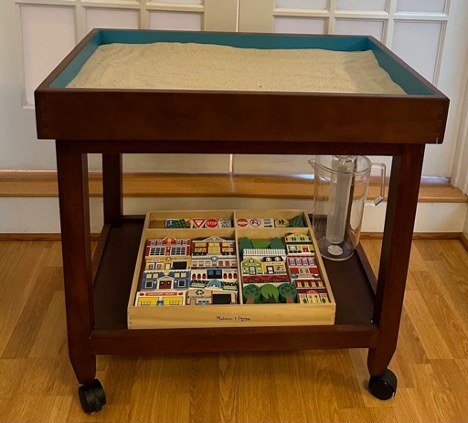
Sandtray therapy is particularly effective for:
- Expressing emotions or experiences that feel beyond words
- Accessing pre-verbal or deeply stored memories
- Working through complex trauma in a contained, manageable way
- Giving form to internal conflicts or relationship dynamics
- Developing greater self-awareness and emotional integration
Many clients find that sandtray work provides breakthrough moments in their therapeutic journey, revealing connections and insights that might otherwise remain hidden. The visual and tactile nature of this approach engages different parts of the brain than verbal therapy, often leading to deeper and more lasting change.
While some may initially associate sandtray work with children’s therapy, my practice focuses exclusively on adults, who consistently discover its profound impact on their healing process. The sand and miniatures provide a language for parts of ourselves that may not yet have words, allowing healing to occur at multiple levels simultaneously.
This is my sandtray, some miniatures, and a pitcher that can be used to add water to the sandtray:

Sandtray therapy can be a stand-alone therapeutic approach, but I generally use it in combination with other types of therapy, particularly EMDR and IFS.
The sandtray is a great tool for exploring parts in Internal Family Systems therapy. A client can choose miniatures to represent their parts and arrange them in the sandtray. Seeing the parts physically represented in the sandtray makes it easier to see how they act and interact.
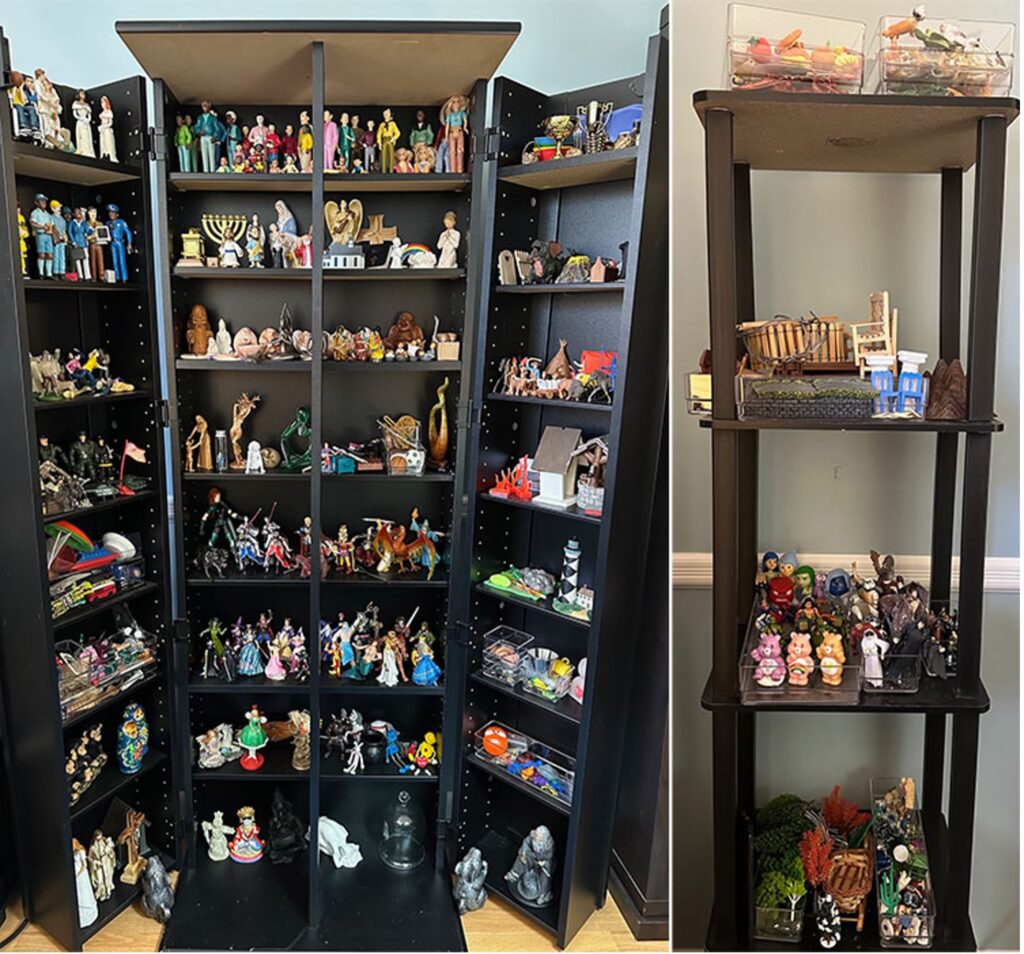
The sandtray can also be used to represent aspects of the client’s past and present life, or to represent the client’s family and/or friends and how the client fits with them. This sandtray that I created depicts the way a client may have experienced their family of origin.
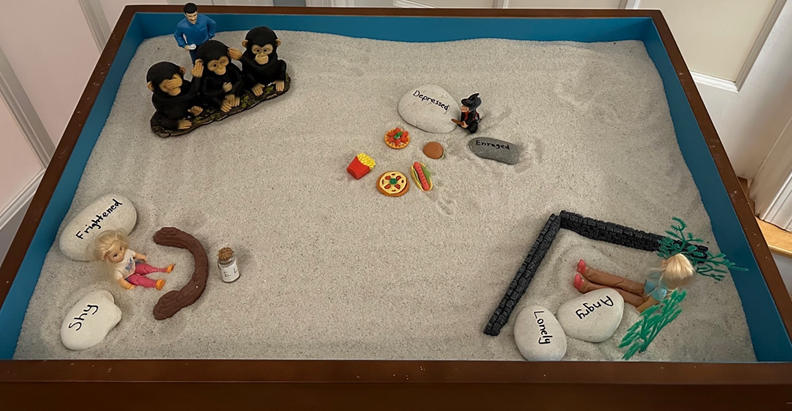
The sandtray can be used when we develop resources that support EMDR processing. An example is a safe / happy / calm / peaceful place that the client can go to mentally when needed. The client can use the sandtray to create the scene, which makes it easier to picture and to use during therapy.
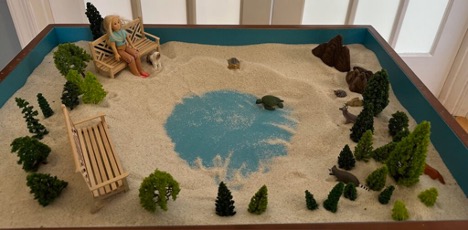
I also develop “attachment resources” with my EMDR clients: a nurturer, a wise figure, and a protector. The client can choose miniatures that represent those roles for them.
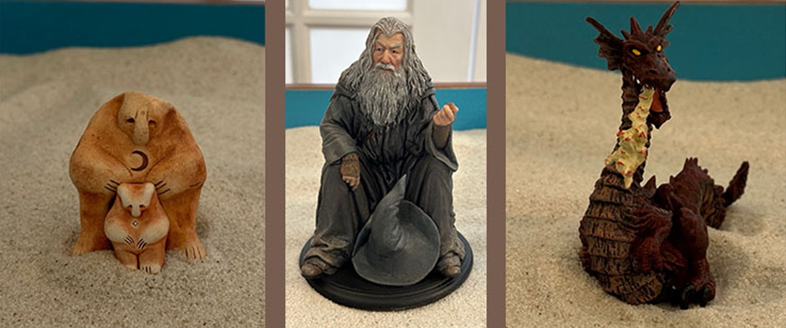
Sometimes a client will divide the sandtray, with one part representing whatever distressing event they’re working on, and the other part representing a safe space. That way they can go back and forth between the two so that working on the difficult material is less anxiety- producing. In this tray that I created, the left side looks like a depiction of a client’s nightmare, while the right side shows the support a client might receive from their family (including pets) and from their spirituality. Notice that, in both cases, the figure representing the client is surrounded by other figures, but the effects are very different!
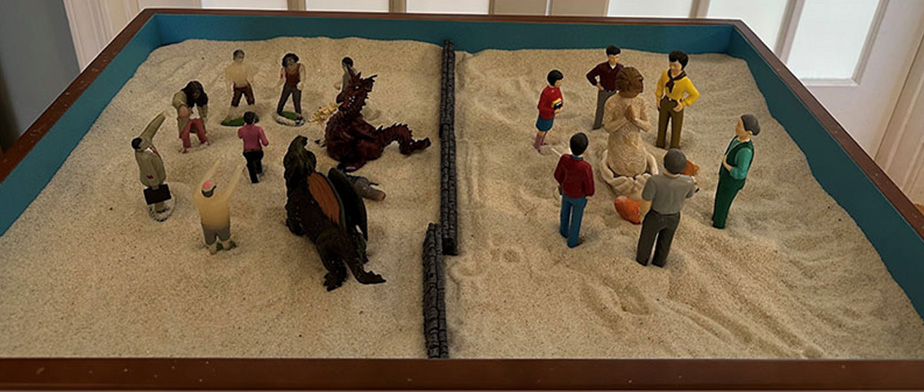
The left side of this next sandtray might represent a client feeling small, alone, trapped and sad. The right side could be the way the client wants to feel and how they want their life to be. The bridge over the chasm between them can represent the transition from one to the other.
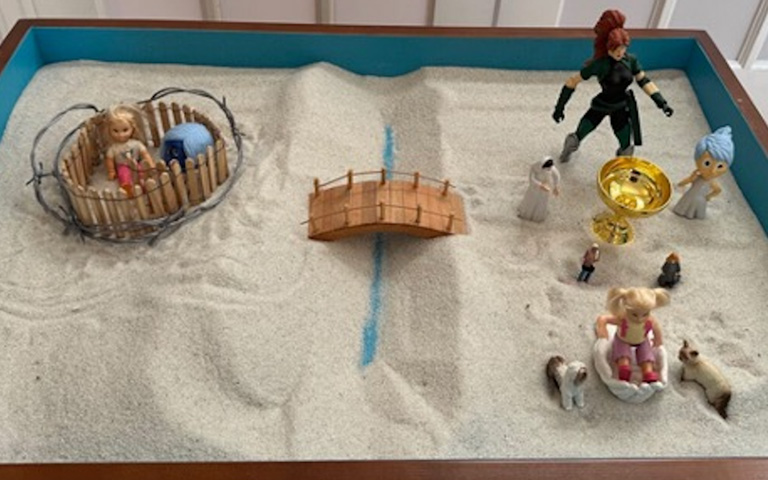
These are only a few of the many therapeutic uses of the sandtray. I’d love to explore this type of therapy with you! Call or text me at (410) 888-0590 or email me at JenniferBeall.LCPC@gmail.com to make an appointment.

